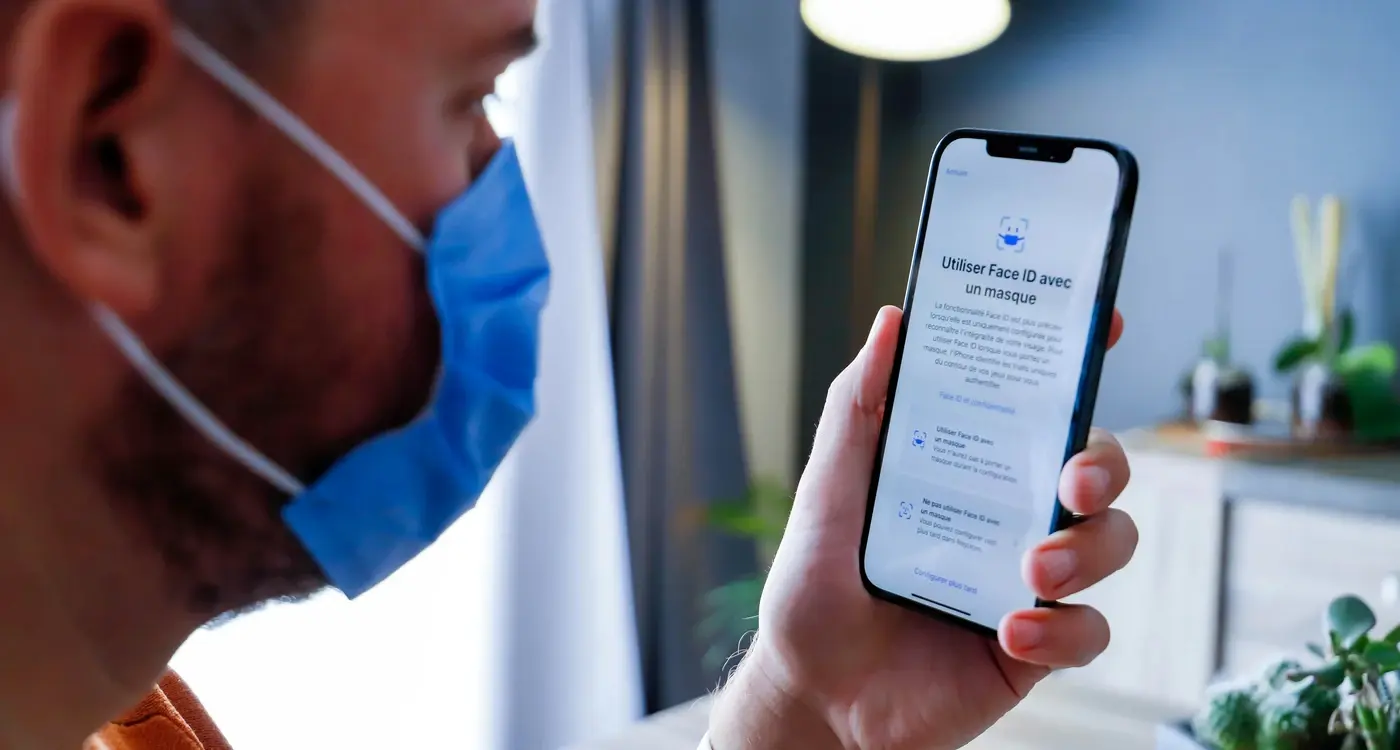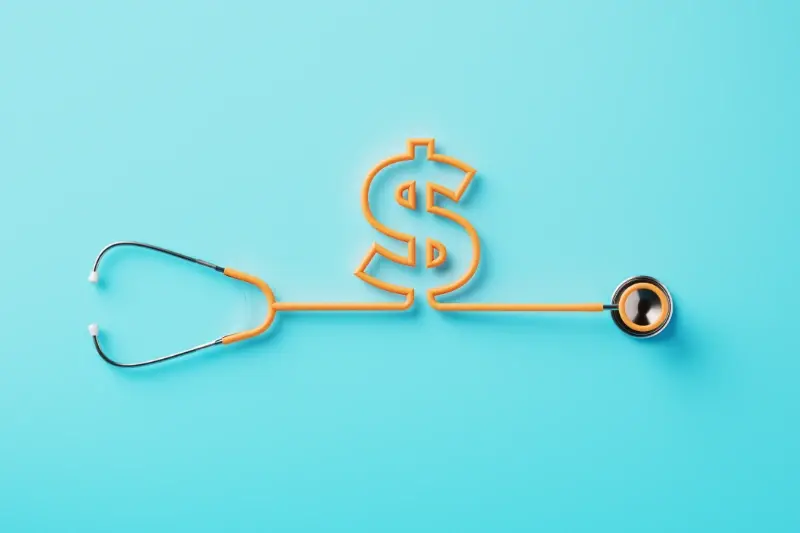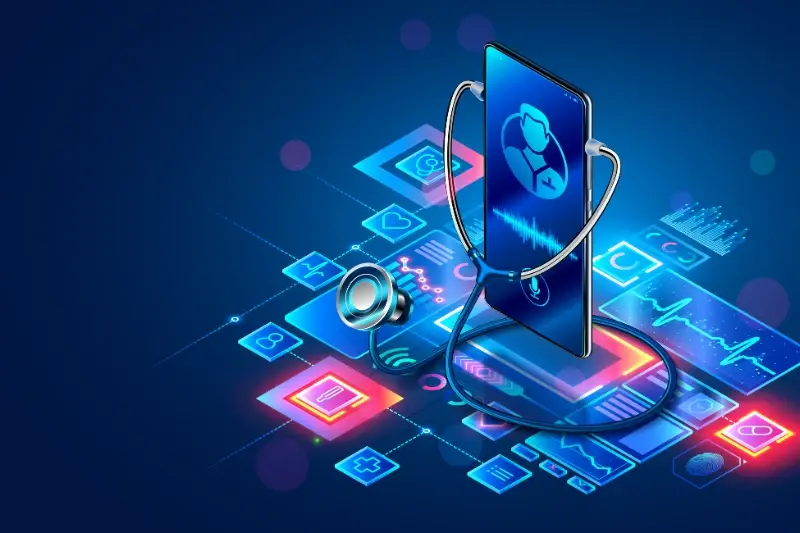From Idea To Patient Care: The Complete Healthcare App Journey
Over 325,000 health apps exist in app stores worldwide, yet most patients still struggle to find digital solutions that genuinely improve their care. That's a staggering number when you think about it—and it tells us something important about the current state of healthcare technology. We're drowning in options, but starving for quality.
Building a successful medical app isn't like creating your typical social media platform or gaming app. The stakes are higher, the regulations stricter, and the users—well, they're often dealing with serious health concerns that affect their daily lives. Every decision you make during the development process can directly impact patient outcomes, which makes this journey both challenging and incredibly rewarding.
The best healthcare apps don't just digitise existing processes—they fundamentally improve how patients engage with their health
Having worked with healthcare startups and established medical organisations for years, I've seen firsthand how the right medical app can transform patient care. But I've also witnessed projects fail spectacularly because teams underestimated the complexity involved. The development process for healthcare apps requires careful planning, rigorous testing, and a deep understanding of both technology and medical needs. From navigating regulatory approval to ensuring your app actually helps patients achieve better health outcomes, there's a lot to get right. That's exactly what we'll explore in this guide—taking you through each step of the journey from your initial idea to an app that makes a real difference in patient care.
Understanding Medical App Types and Their Impact
Medical apps come in all shapes and sizes—and honestly, the variety can be quite overwhelming when you're just starting out. I've worked on everything from simple medication reminders to complex diagnostic tools, and each type serves a completely different purpose in healthcare.
Let's break this down into something more manageable. Patient-focused apps are probably what most people think of first; these include fitness trackers, symptom checkers, and appointment booking systems. They're designed for everyday people to manage their own health. Then you've got clinical apps—these are the serious ones that doctors and nurses use for things like electronic health records, medical reference guides, and patient monitoring systems.
Administrative vs Clinical Applications
Administrative apps handle the business side of healthcare—scheduling, billing, insurance claims, that sort of thing. They might not seem as exciting as the clinical ones, but they're absolutely fundamental to keeping healthcare systems running smoothly. Clinical apps, on the other hand, directly support patient care and medical decision-making.
The Real-World Impact
What fascinates me about medical apps is how they're changing the way healthcare actually works. Remote monitoring apps mean patients can stay at home longer; diagnostic apps can speed up treatment decisions; and educational apps help people understand their conditions better. The impact isn't just theoretical—these apps are genuinely improving patient outcomes and making healthcare more accessible.
The key thing to remember is that not all medical apps are created equal. Some are simple wellness tools, whilst others are sophisticated medical devices that require strict regulatory approval. Understanding where your app fits in this spectrum will shape everything about how you develop it.
Planning Your Healthcare Application
Right, let's talk about planning your medical app properly—because getting this bit wrong will cost you time, money, and potentially put patients at risk. I've seen too many healthcare projects start with good intentions but poor planning, and trust me, it never ends well.
The first thing you need to nail down is exactly who will be using your app and what problem you're solving for them. Are you building for patients managing chronic conditions, doctors needing quick reference tools, or nurses tracking vital signs? Each user group has completely different needs, and understanding what patients actually want in healthcare apps is crucial for success.
Define Your Core Features
Once you know your users, list out the absolute must-have features—not the nice-to-haves, the actual essentials. Healthcare apps work best when they do one thing brilliantly rather than ten things poorly. A medication reminder that never fails is infinitely more valuable than a Swiss Army knife app that's confusing to navigate.
Consider the Technical Requirements
Healthcare apps aren't your typical social media platform; they need to handle sensitive data securely and often integrate with existing medical systems. You'll need to think about offline functionality too—hospitals and clinics don't always have perfect internet connections.
Start with paper sketches before jumping into digital designs. Map out every user journey on paper first—it's much cheaper to change your mind at this stage than after development begins.
The development process becomes much smoother when you've done thorough planning upfront. Rushing this stage might seem like you're saving time, but you'll pay for it later when patient outcomes depend on getting the details right.
The Development Process Explained
Building a healthcare app isn't like throwing together a quick game or social media platform—there's so much more at stake. I've worked on medical applications where one small bug could literally affect someone's treatment, which means the development process needs to be rock solid from day one.
The whole journey typically unfolds in carefully planned phases, each one building on the last. Understanding how development sprints work becomes essential when managing complex healthcare projects with strict deadlines and safety requirements.
Core Development Phases
Most healthcare app projects follow a structured approach that looks something like this:
- Technical architecture and security framework setup
- User interface design with accessibility compliance
- Backend development with medical data handling
- API integration for healthcare systems and devices
- Rigorous testing at every stage
- Compliance validation and documentation
What makes medical app development different is the constant need to validate everything against regulatory standards. Where a regular app might have a bug that causes a minor inconvenience, healthcare apps demand perfection because patient safety depends on it.
Security and Integration Challenges
The technical side gets complicated fast when you're dealing with patient data and medical devices. Your app needs to talk to hospital systems, wearable devices, electronic health records—and do it all whilst maintaining bulletproof security. This isn't just about following best practices; it's about meeting specific healthcare standards that can take months to implement properly.
The development timeline for medical apps is typically longer than standard applications, but that extra time investment pays off when you launch with something that doctors and patients can truly rely on.
Regulatory Requirements and Compliance
Here's where things get serious with your medical app—and I mean really serious. Unlike building a social media app or a game, healthcare applications face strict regulatory oversight that can make or break your entire project. The rules exist for good reasons though; we're dealing with people's health and safety after all.
In the UK, the MHRA (Medicines and Healthcare products Regulatory Agency) oversees medical device regulations, whilst the FDA handles approval in the United States. Whether you need FDA or MHRA approval for your healthcare app depends on what it does. Apps that diagnose conditions, calculate drug dosages, or monitor patient vitals typically require regulatory approval. Simple fitness trackers or appointment booking apps? They usually don't.
Understanding Classification Levels
Medical devices get classified into different risk categories—Class I being the lowest risk and Class III the highest. Most medical apps fall into Class I or II categories. Class I apps might include simple symptom trackers, whilst Class II could cover apps that help manage chronic conditions like diabetes. The classification determines how much regulatory scrutiny your app will face during the development process.
The regulatory pathway isn't something you bolt on at the end—it needs to be baked into your development process from day one
Data Protection and Privacy
Patient data protection is non-negotiable. GDPR compliance in Europe and HIPAA requirements in the US set strict standards for how you collect, store, and process health information. Your app needs robust encryption, secure authentication, and clear consent mechanisms. Building a HIPAA-compliant app requires significant investment, but getting this wrong isn't just embarrassing—it can result in massive fines and legal trouble that could destroy your business before it even starts.
Testing for Safety and Effectiveness
Testing a healthcare app isn't like testing your average shopping or social media app—there's no room for "we'll fix that bug in the next update" when people's health is on the line. The testing phase needs to be thorough, methodical, and honestly quite relentless. You're not just checking if buttons work or screens load properly; you're validating that your app won't cause harm to patients or healthcare providers.
The testing process typically starts with functional testing—making sure all features work as intended. But healthcare apps require additional layers of testing that most developers never encounter. Security testing becomes paramount because you're handling sensitive patient data. Performance testing under stress is critical because medical professionals can't afford system crashes during patient care.
Types of Testing Required
- Functional testing for all app features and workflows
- Security testing to protect patient data and prevent breaches
- Usability testing with real healthcare professionals
- Performance testing under high-stress scenarios
- Compatibility testing across different devices and operating systems
- Clinical validation to prove medical effectiveness
Clinical validation deserves special attention—it's where you prove your app actually improves patient outcomes or healthcare delivery. This might involve controlled studies comparing patient results before and after using your app. Starting user testing early in the development process can help identify issues before they become costly problems during clinical validation.
Working with Healthcare Professionals
Getting real doctors, nurses, and patients to test your app is invaluable. They'll spot issues you never considered and use the app in ways you didn't expect. Their feedback often leads to significant design changes, but it's better to discover problems during testing than after launch when real patients are involved.
Launching Your Medical App Successfully
After months of development and testing, your medical app is finally ready for the world. But launching isn't just about hitting the publish button on the app store—there's quite a bit more to consider when you're dealing with healthcare applications.
Start with a soft launch to a limited group of healthcare professionals or patients. This gives you real-world feedback without the pressure of a full public release. Think of it as your final safety check; you'll spot issues that testing might have missed and get valuable insights about how people actually use your app in practice.
App Store Optimisation for Healthcare Apps
Getting your medical app discovered requires careful attention to your app store listing. Your app description needs to be clear about what your app does without making any medical claims you can't support. Screenshots should show real functionality—avoid flashy graphics that don't represent the actual user experience.
Keywords matter, but be honest about what your app delivers. Patients and healthcare professionals need to find exactly what they're looking for, not something that sounds good but doesn't match their needs.
Building Trust from Day One
Trust is everything in healthcare apps. Make your privacy policy easy to find and understand. Be transparent about what data you collect and why. If your app connects with other healthcare systems, explain how that works and what security measures are in place.
Consider partnering with healthcare organisations or professionals who can endorse your app. Their backing carries significant weight with potential users who are naturally cautious about new health technologies.
Launch your medical app with a comprehensive support system in place. Healthcare users have zero tolerance for apps that don't work properly, so having a robust bug tracking system ensures you can respond quickly to any issues or questions.
Measuring Success Through Patient Outcomes
After all the hard work of building your healthcare app, you'll want to know if it's actually helping people. This is where measuring patient outcomes becomes really important—and honestly, it's one of the most rewarding parts of the whole process.
Patient outcomes are basically the results that happen to patients after they use your app. Did their blood pressure go down? Are they taking their medication more regularly? Do they feel less anxious about managing their condition? These are the kinds of changes that show whether your app is making a real difference.
Key Metrics That Actually Matter
When I work with healthcare clients, I always tell them to focus on metrics that connect directly to patient wellbeing. App downloads are nice to see, but they don't tell you if someone's health improved. Here are the measurements that really count:
- Clinical indicators like blood glucose levels, weight changes, or symptom frequency
- Medication adherence rates—are people taking their pills when they should?
- Patient engagement scores and quality of life surveys
- Healthcare utilisation changes—fewer emergency visits might mean your app is working
- Time to recovery or symptom improvement
Building Long-term Data Collection
The tricky bit is that healthcare outcomes take time to show up. Someone using a diabetes management app might not see improvements for weeks or months. That's why you need to plan for long-term data collection from day one.
Working with healthcare providers can give you access to clinical data that shows the bigger picture. Some apps also use patient-reported outcome measures—basically asking users to rate how they're feeling over time. Ensuring your app is accessible for elderly users becomes particularly important when collecting long-term outcome data, as this demographic often has the most chronic health conditions to track.
Conclusion
Building a medical app isn't just about writing code and designing pretty screens—it's about creating something that can genuinely improve how people receive healthcare. Throughout this development process, you'll face challenges that other app categories simply don't have to deal with. The regulatory hurdles alone can seem overwhelming at first, but they exist for good reason; patient safety isn't something we can compromise on.
What I find most rewarding about healthcare app development is seeing the direct impact on patient outcomes. Unlike a social media app or a game, where success might be measured in downloads or engagement time, medical apps have the potential to save lives, reduce hospital readmissions, or help someone manage a chronic condition more effectively. That's a responsibility we take seriously, and it should guide every decision you make during the development process.
The journey from your initial idea to a fully launched medical app will test your patience—there's no getting around that. You'll spend more time on compliance documentation than you might expect. Testing will take longer than other app types. But when you finally see healthcare professionals using your app to provide better care, or patients achieving improved health outcomes because of what you've built, all those extra steps make perfect sense.
If you're ready to start this journey, remember that having an experienced development team who understands the unique challenges of medical app development can make all the difference. The healthcare industry deserves apps that are built right the first time.
Share this
Subscribe To Our Blog
You May Also Like
These Related Stories

Mobile Health App Development: Navigating the Clinical-Technical Divide

The Hidden Costs of Healthcare App Development Nobody Talks About





